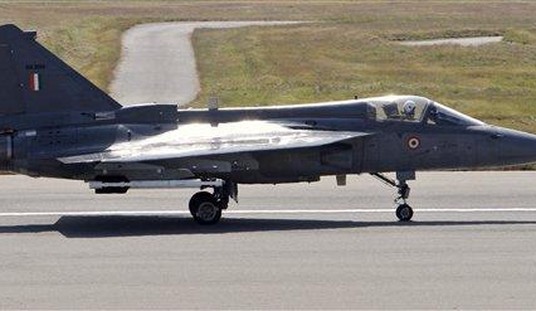In a recent interview on the spread of Islamic terror groups in Africa’s Sahel, a French researcher made the following observation:
After having extended their grip on the Muslim Sahara, the terrorists’ next target will be the places where Christians and Muslims live alongside one another. In Burkina Faso and in Nigeria the equilibrium that has existed hitherto is now under threat. In the next five years, these African states will continue to need the support of the West if they are to avoid catastrophe.
While all this is true—Nigeria and Burkina Faso are hotbeds of persecution and slaughter of Christians—the most noteworthy and instructive phrase in the above quote is “where Christians and Muslims live alongside one another.”
This seems to be the crux of the issue, above and beyond the Sahel: wherever Muslims live alongside non-Muslims, conflict, violence, and outright wars tend to be the norm—or, as political scientist Samuel Huntington memorably put it in his Clash of Civilizations, “Islam’s borders are bloody.” He continued:
Wherever one looks along the perimeter of Islam, Muslims have problems living peaceably with their neighbors. The question naturally rises as to whether this pattern of late twentieth century conflict between Muslim and non-Muslim groups is equally true of relations between groups from other civilizations. In fact, it is not. Muslims make up about one-fifth of the world’s population but in the 1990’s they have been far more involved in intergroup violence than the people of any other civilization. The evidence is overwhelming [p. 256].
Indeed, matters have only gotten worse since Huntington’s book came out in 1996. Along with the aforementioned examples from the Sahel, one need only look to those Western European nations that hold significant Muslim populations—where crimes, riots, rapes and other forms of “anti-infidel” assaults proliferate—for confirmation that “Muslims have problems living peaceably with their neighbors.”
Moreover, if Muslims are not waging a full-blown jihad inside Europe, that has more to do with circumstances—including the fact that they are still vastly outnumbered—than anything else. For example, not a few Christians from Syria and Iraq reported that, though for years they had lived peacefully alongside their Muslim neighbors, once ISIS came to town, and siding with the jihad became a feasible option, many of their Muslim neighbors—including some that the Christians had long cared for—instantly turned on them, often in vile ways.
But surely as the “experts” tell us, there is nothing intrinsic about this phenomenon? Surely it’s a product of inequality, grievances, “Islamophobia,” and all the rest?
Quite the opposite; in fact, the entire phenomenon of Muslims congregating alongside non-Muslims and engaging in crime/jihad/terrorism is part and parcel of how Islam has always consolidated and spread. It even has a name that still resonates within the Islamic consciousness.
Historically, wherever the jihad was stopped, there, alongside the border of their infidel neighbors, Muslims erected chains of strongholds and fortresses, all filled with professional jihadis dedicated to launching raids onto the non-Muslims. Each of these came to be known as a ribat (رباط), based on an Arabic word rooted to the idea of a “tight fastening” or “bonding” found in Koran 3:200: “O you who have believed, persevere and endure and remain stationed [رابطوا] and fear Allah that you may be successful.”
The word ribat lives on, though few recognize its etymology. For example, Rabat, the capital of Morocco, is so named because in origin it was a ribat, whence centuries of Barbary/pirate raids on the Christian Mediterranean were launched. Similarly, Almoravids—the name of a notorious eleventh century North African based jihadi group—is simply a transliteration of the Arabic al-murabitun, which means they who fight along the ribat (not unlike al-mujahidun, they who wage jihad). In 1086 these “Almoravids” invaded Spain and crushed the Castilians at the battle of Sagrajas; afterward they erected a mountain consisting of 2,400 Christian heads to triumphant cries of “Allahu Akbar.”
Spain actually offers numerous examples of the ribat or border phenomenon—most notoriously, the one that formed along the Duero River, separating the Christian north from the Islamic south. For centuries, it too became “a territory where one fights for the faith and a permanent place of the ribat.” As in other borders where Muslims abutted against non-Muslims, a scorched no-man’s-land policy prevailed. Ibn Hudayl of Granada (d.812) explained the logic:
It is permissible to set fire to the lands of the enemy, his stores of grain, his beasts of burden—if it is not possible for the Muslims to take possession of them—as well as to cut down his trees, to raze his cities, in a word, to do everything that might ruin and discourage him, provided that the imam deems these measures appropriate, suited to hastening the Islamization of that enemy or to weakening him. Indeed, all this contributes to a military triumph over him or to forcing him to capitulate.
French historian Louis Bertrand (b. 1866) elaborates:
To keep the Christians [of northern Spain] in their place it did not suffice to surround them with a zone of famine and destruction. It was necessary also to go and sow terror and massacre among them. . . . If one bears in mind that this brigandage was almost continual, and that this fury of destruction and extermination was regarded as a work of piety—it was a holy war [jihad] against infidels—it is not surprising that whole regions of Spain should have been made irremediably sterile.
This of course remains a perfectly applicable description of what is currently happening, both in Africa and increasingly in Europe—anywhere, in fact, where Muslims and non-Muslims live alongside one another.
Note: For more on the ribat, see author’s recent book, Sword and Scimitar: Fourteen Centuries of War between Islam and the West.










Join the conversation as a VIP Member